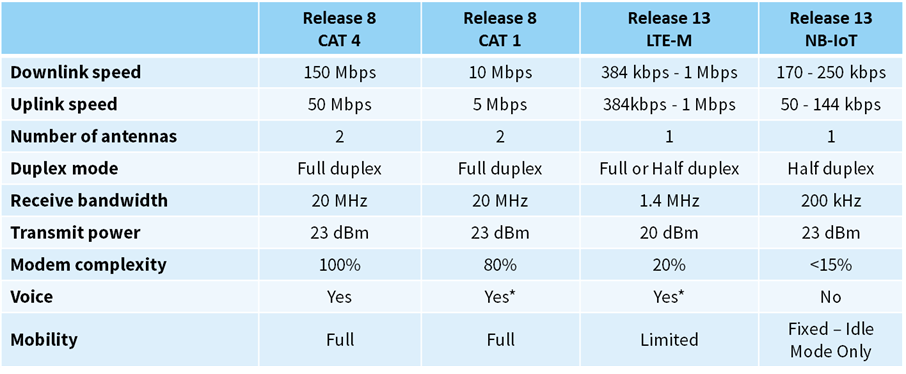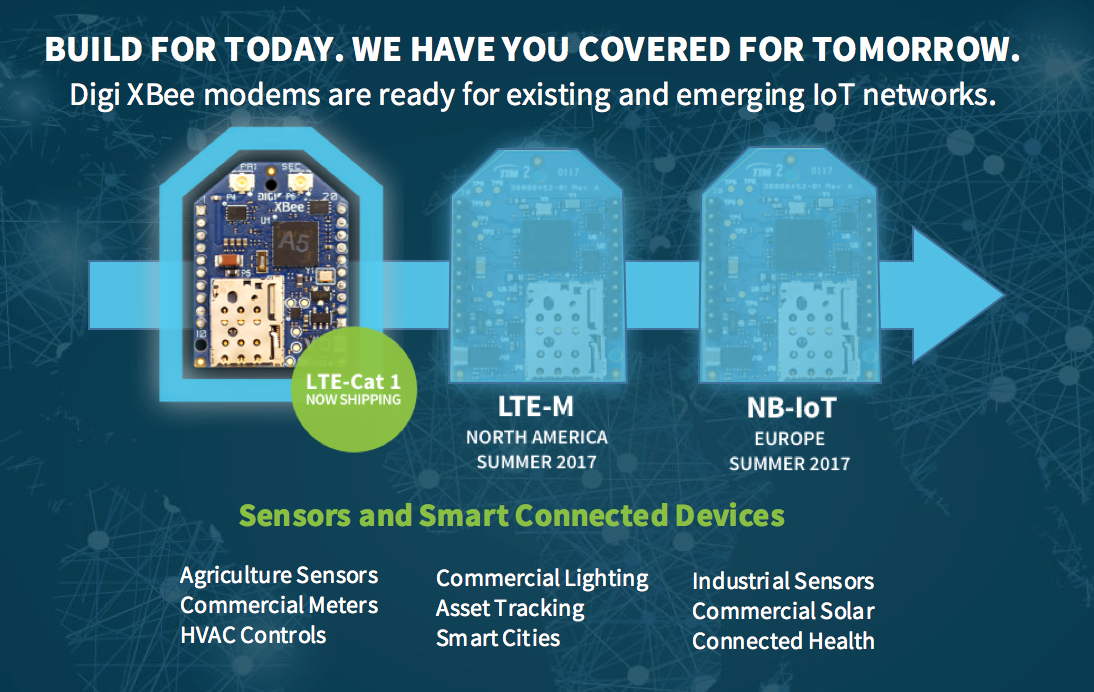 Digi International
Digi International
June 09, 2017
Introduction to LTE-M
LTE-M (also referred to as LTE Cat-M or Cat-M1) is a new mobile data standard for the growing LPWA, or Low-Power Wide-Area market. Its part of the latest Release (13) from the 3GPP cellular standards organization. LTE-M is optimized for lower bandwidth applications, devices that can sleep and report their data periodically. It supports ultra-long battery life capabilities (think multiple years), extended range and better building penetration for devices that might be deployed in hard to reach places. It is ideal for use-cases including remote/low-density industrial sensors, automated commercial meters for water or gas systems, connected healthcare devices, and even intelligent industrial lighting systems.

New Power-Saving Features of LTE-M
There are two key features built into LTE-M that enable its power efficiency - PSM (Power Savings Mode) and eDRX (extended Discontinuous Reception).
PSM
Power Savings Mode (PSM) allows the device notify the cellular network that its going to sleep, and when the network can expect it to wake up based on timer values that are sent by the device. Registration to the network is maintained even while the device sleeps. This means that the device can save battery power, then wake up on schedule to exchange data, or earlier if important information like an alarm needs to be transmitted immediately. It can remain in this registered sleep state for up to 12 days. Once the device wakes up and transmits its payload, it is required to wait and listen for responses from the network for a short period of time (4 idle frames), after which it can go back to sleep in PSM.
eDRX
Extended Discontinuous Reception (eDRX) is a mode that improves power efficiency for cellular devices by reducing the chattiness between the device and the network. A normal LTE device is required to be active for a paging cycle every 1.28 seconds. An LTE device that leverages eDRX is only required to be active for a paging cycle every 10.24 seconds. This means a device that is connected to the network and communicating or idle is required to be in an active, power-consuming state for about 10x less time, compared to devices that dont support this mode. eDRX also allows the device to tell the network that it would like to skip some pre-determined number of these 10.24s cycles, extending paging intervals to 40 minutes or more. Both eDRX and PSM save power, but at its core eDRX facilitates reduced power consumption for devices that are awake and connected/idle with the network.
How does LTE-M Compare to Other LTE Technologies?
Top 3 Things to Remember about LTE-M
1. Simpler, less expensive hardware
Devices can connect to LTE networks with simpler modems that only require 1 antenna, because they are half-duplex and have a narrower bandwidth.
2. Longer Battery Life
Devices can leverage the new Power Savings Mode (PSM) and extended discontinuous reception (eDRX) to achieve up to 10 years of battery life
3. Cheaper Data Plans
LTE-M devices will use lower data rates than other LTE devices (typically less than 300Kbps), so they will be less network-hungry, enabling carriers to vastly reduce the monthly cost of data plans for OEMs.
